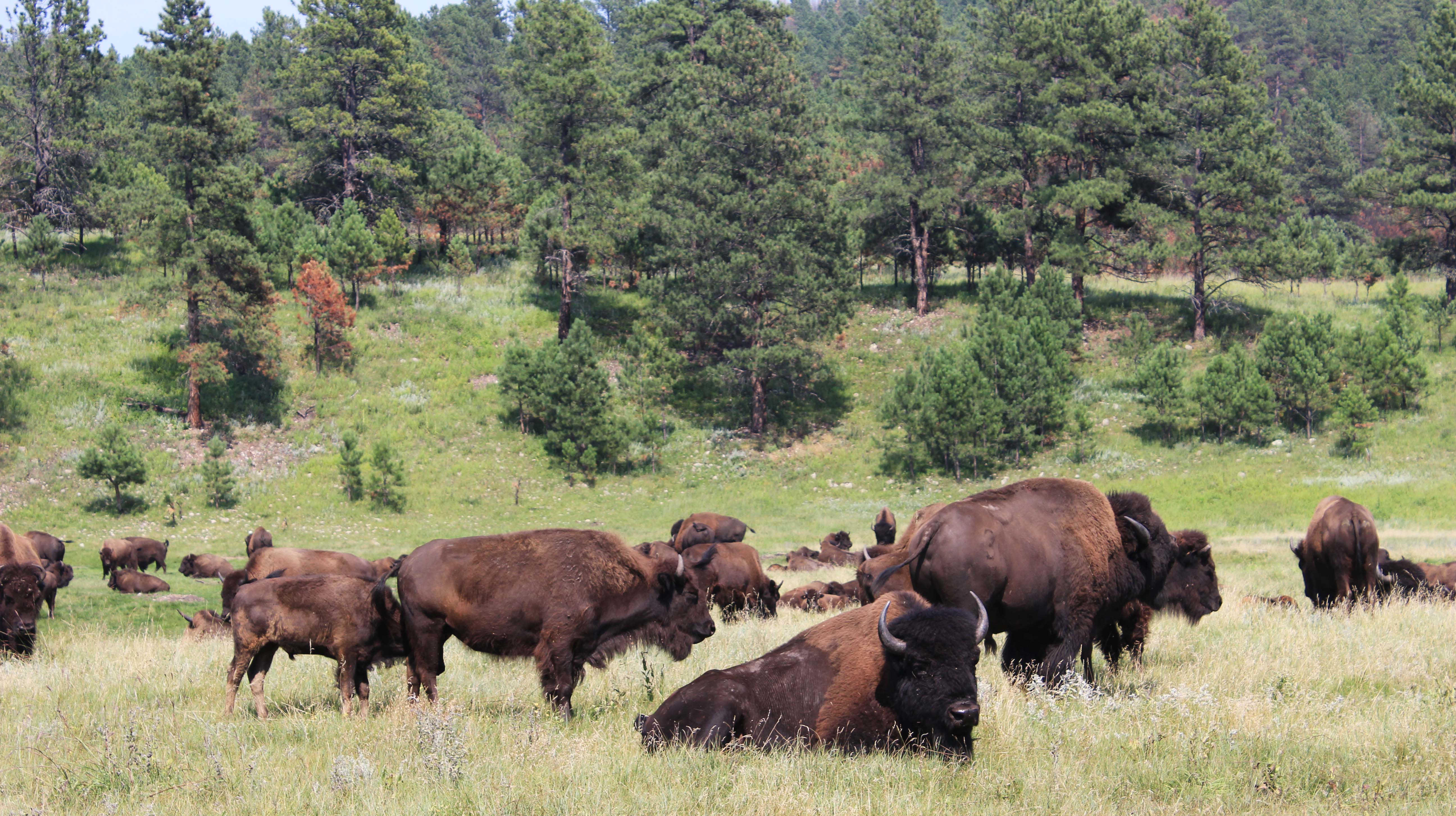We entered the Black Hills – a huge stretch of western South Dakota home to dark granite mountains blanketed with spruce and pine trees. The place has mystical appeal and the Sioux travelled here for generations to speak with the Great Spirit and await visions. The purpose of our visit was twofold – Custer State Park and Mount Rushmore.
Custer State Park is a large wildlife reserve named after Colonel Custer of “Custer’s Last Stand”-fame. The key reason for the visit was to find the illusive American bison. While they are commonly known as buffalo in US and Canada, American bison are only distantly related to the African buffalo and Asian water buffalo (the split happened 5 to 10 millions years ago). Bison have shaggy coats of long hair and can weigh up to a tonne. We came across a huge herd wallowing around in the midday heat.
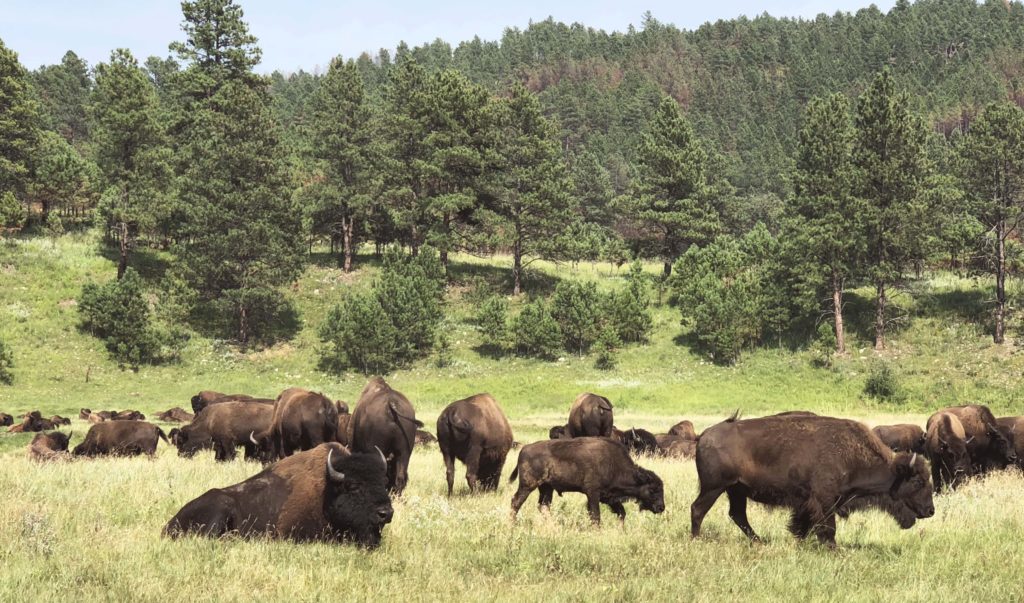
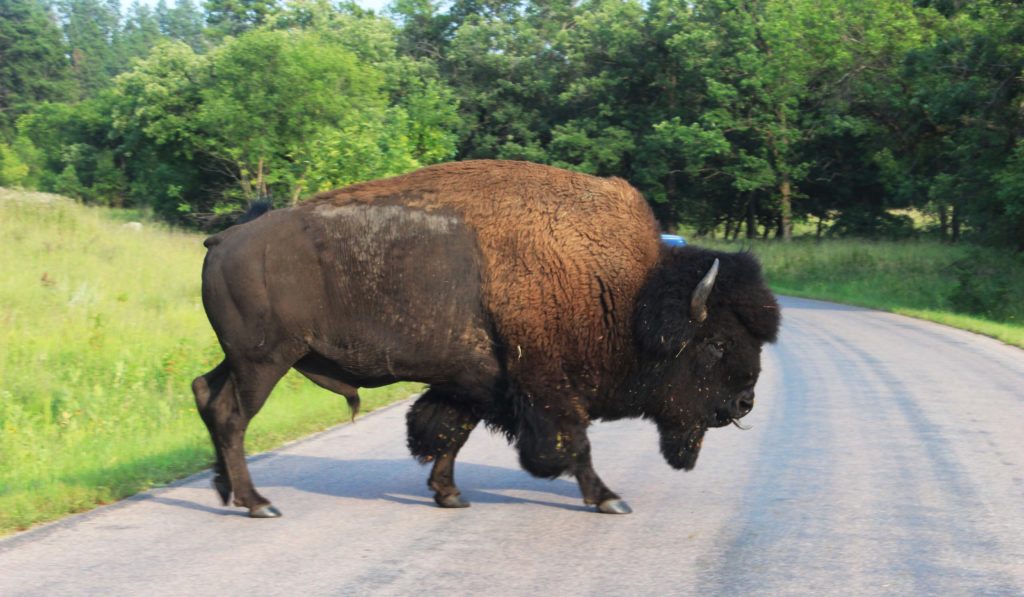
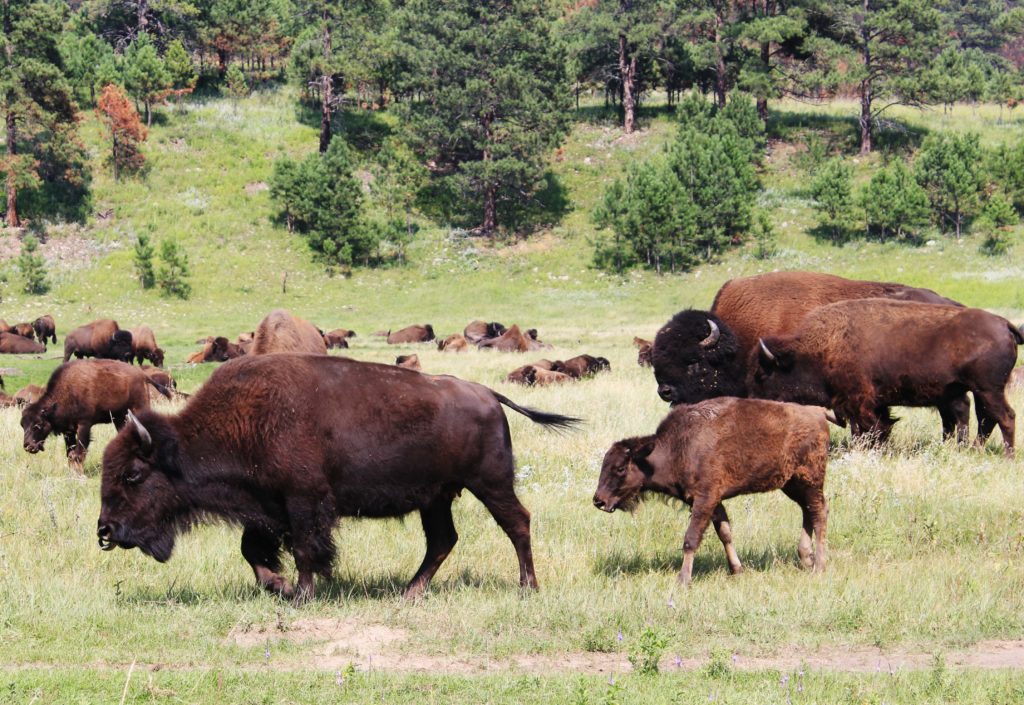
Bison once roamed across the entire North America, including parts of Mexico, but were steadily hunted close to extinction in the 19th and 20th centuries (reaching an estimated low of 541 animals). Since then, there have been various revitalization projects. This was a theme we witnessed a few times in North America – a near eradication of a species as people occupied the land, followed by restoration activities many decades later (Custer State Park’s herd was reintroduced in 1914, for example).
One group hurt by the near extinction of the bison (aside from the bison themselves), were the Native Americans. The Native Americans of the Great Plains relied on the bison for a range of things – food, clothing, shelter (hides used to make houses), and as a key role in religious activities. The near extinction of the bison meant the Native Americans faced a major culture and lifestyle change.
We also found the notorious Begging Burros – a group of tame donkeys that descended from ones that once hauled visitors up to the park’s peaks. These rides were discontinued and the animals were released into the park. They seem to have marked out a good busking territory at one of the scenic stops and have become a big crowd-pleaser – earning food rewards from many a passerby.
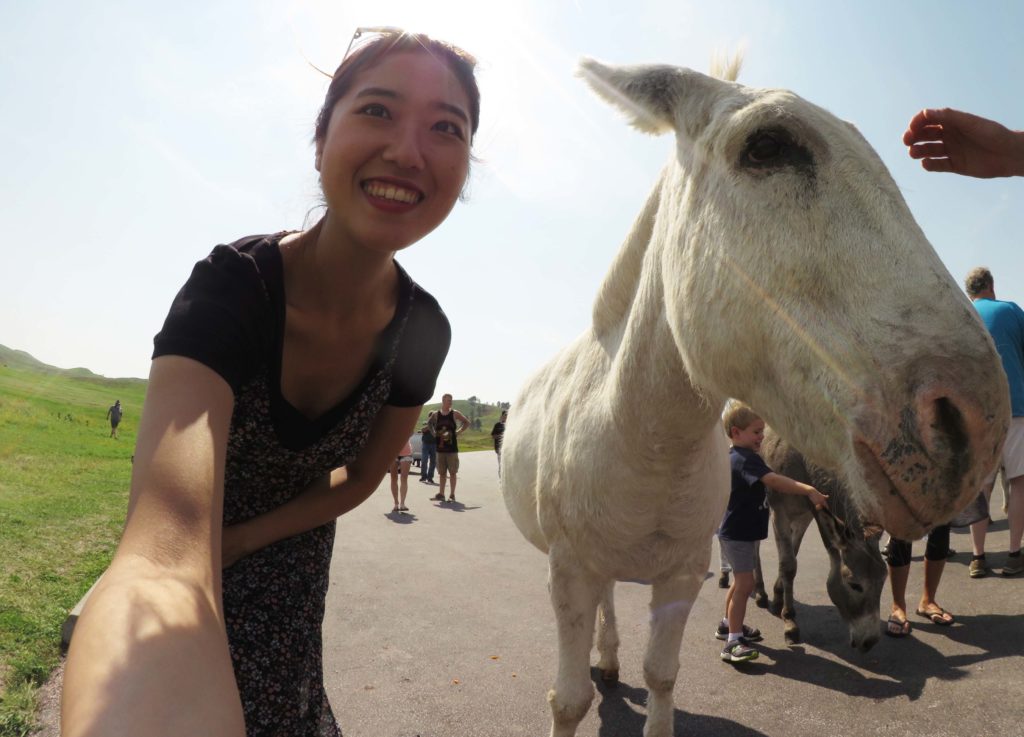
There are about 1,400 bison in Custer. That number is kept static by an interesting event – every autumn the bison are round up and any excess are sold off at an auction. The park only has capacity for a certain number. The roundup, performed by a group of cowboys and cowgirls, is apparently a chance to glimpse the Old West and draws a big crowd.
Here are a few more bison pictures:
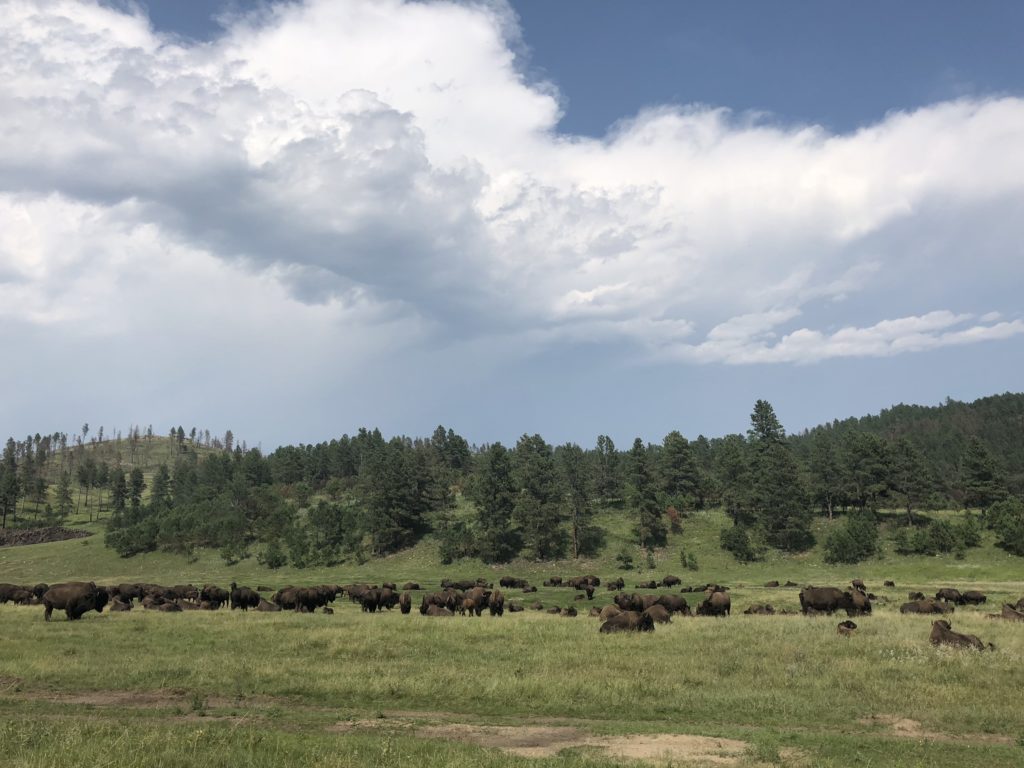
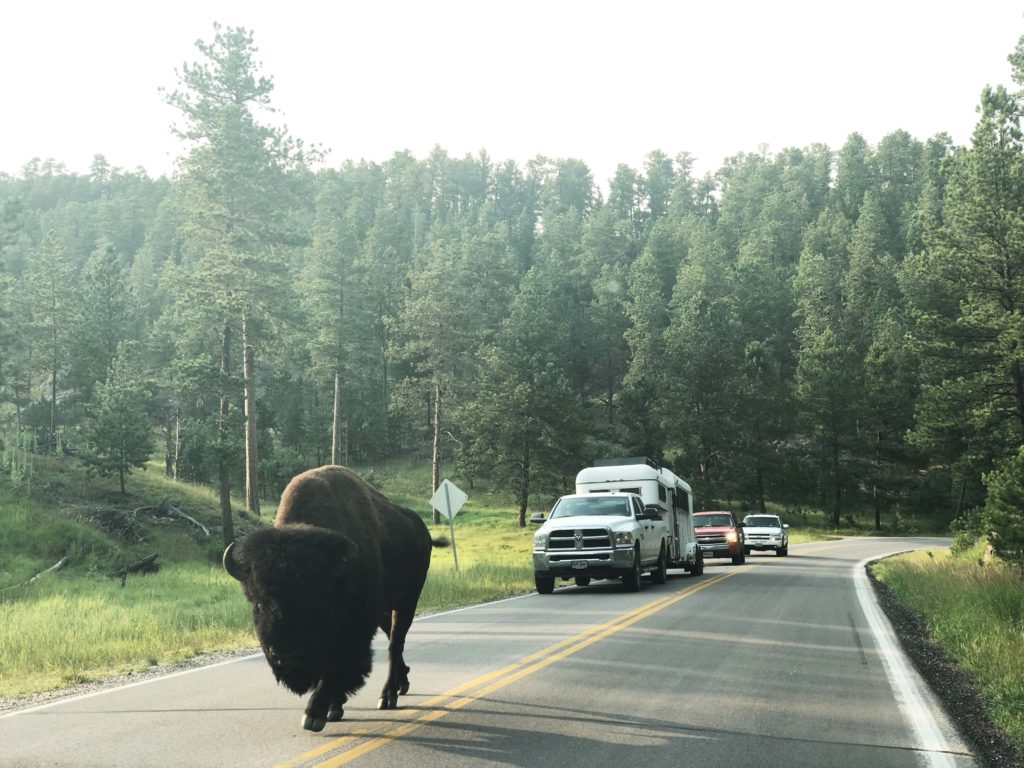
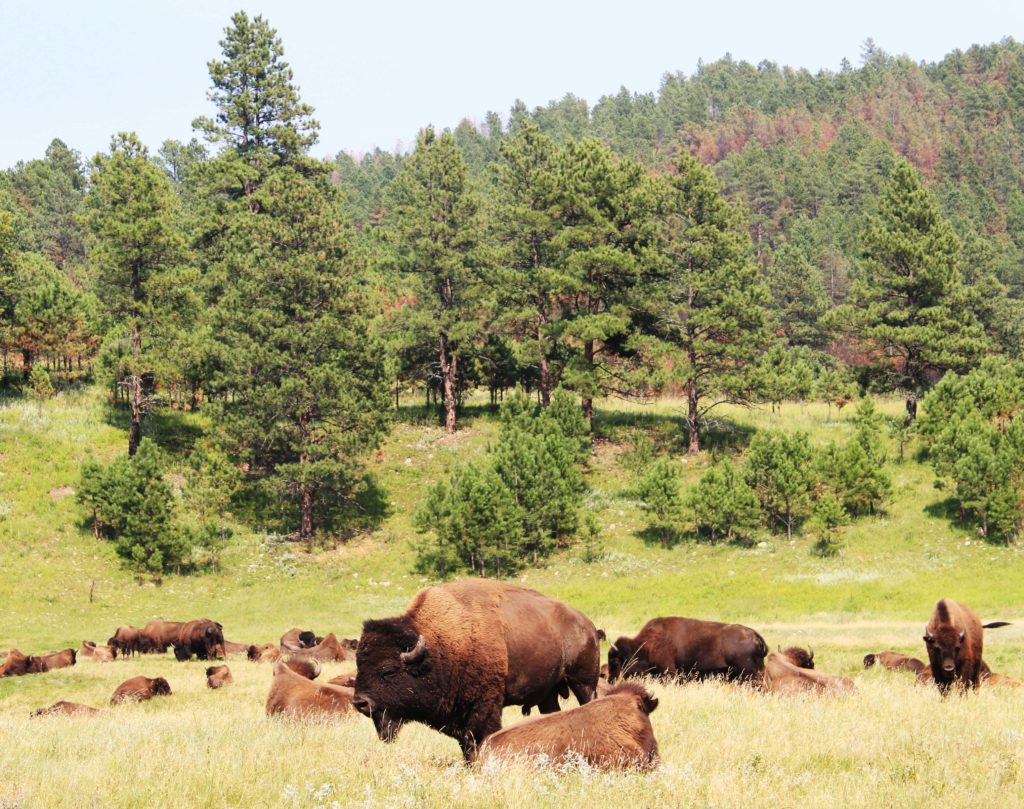
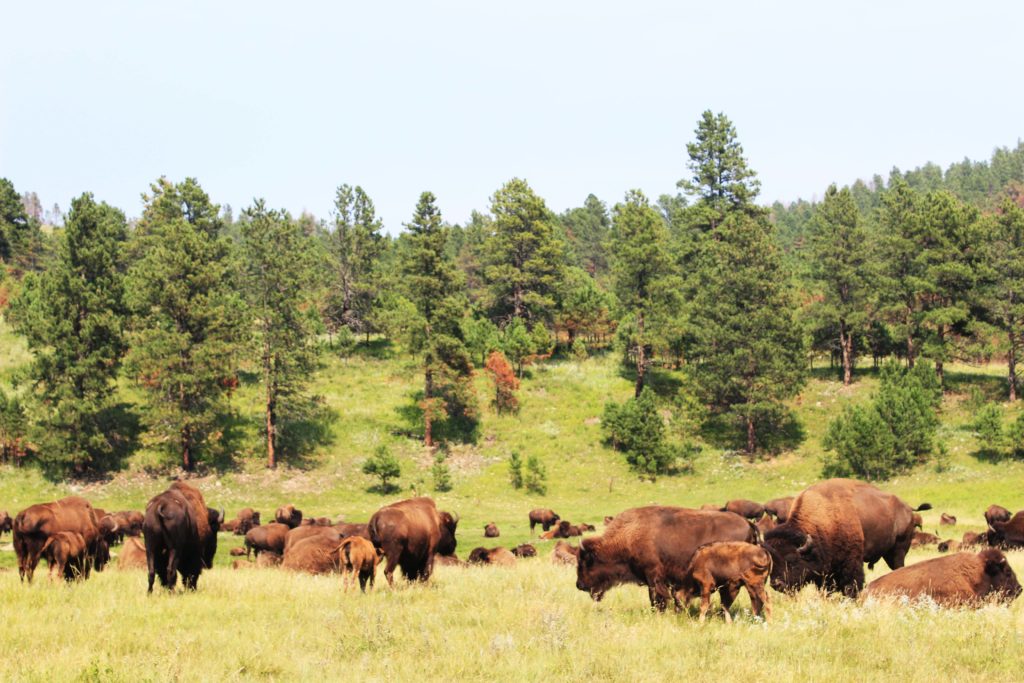
At this stage, Ella and I were camping pros:

Carved out of a mountain in the Black Hills is the impressive Mount Rushmore. It depicts the faces of four of the country’s most historically significant presidents. When it was sculpted, the US was an up-and-coming power, nowhere near the superpower it is today. Mount Rushmore was a demonstration of its ambition – huge (said: yoooge), bold, and confident. I mean, they carved an entire mountain! It was also an attempt to bring tourists to South Dakota, an attempt that proved successful – tourism is the state’s second-largest industry and Mount Rushmore is the top attraction with about 3 million visitors (approximately 8,200 per day). From Custer, we drove along the beautiful 18 mile Iron Mountain Road to reach the Mount.
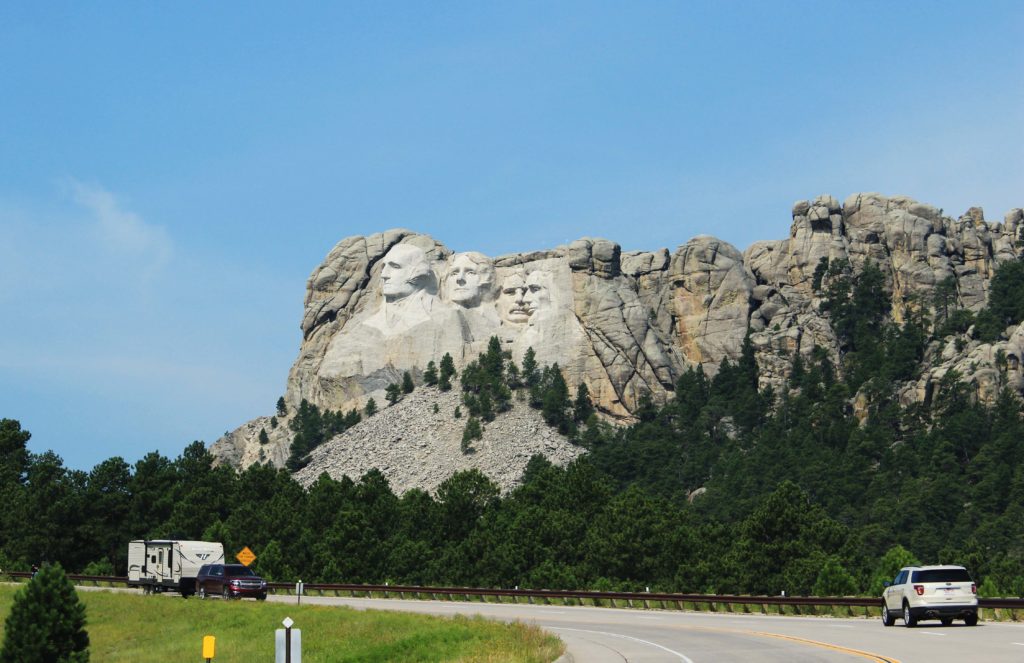
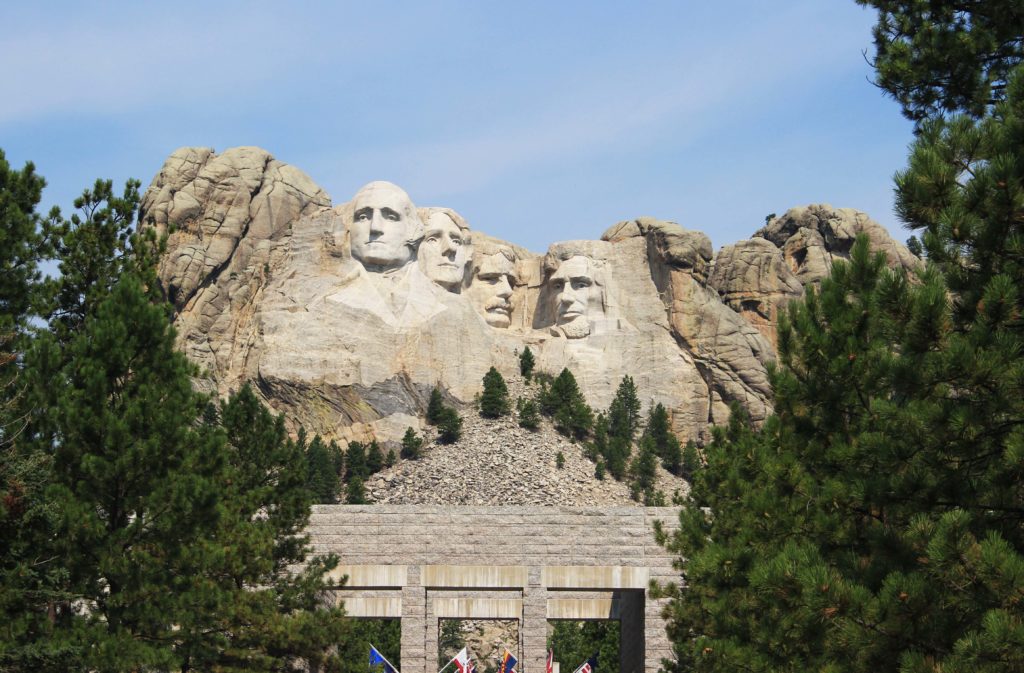
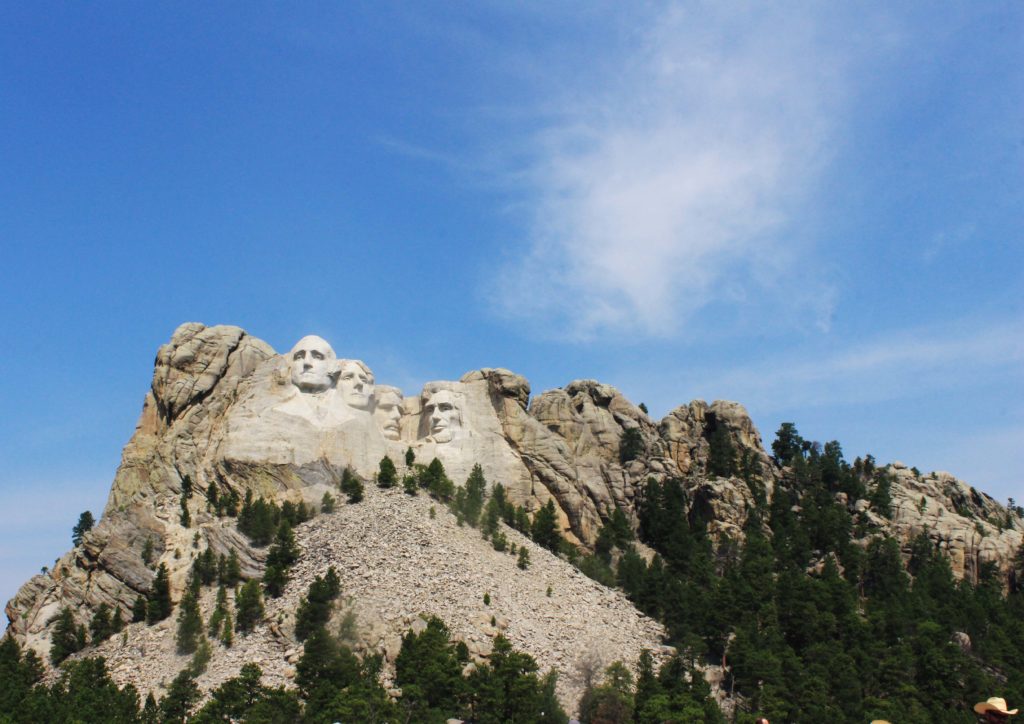
So why those four? They were actually chosen by the sculptor. He believed that they represented four different key aspects of the nation (from left to right):
George Washington: ‘the struggle for independence and the birth of the nation’. Washington probably requires little introduction – an officer with the British, turned ‘patriot’ to lead the Continental Army against the British, and became the country’s first president.
Thomas Jefferson: ‘territorial expansion of the country’. Penned the Declaration of Independence, staunchly against the centralization of power, the third president of the US where he oversaw the Louisiana Purchase from the French that nearly doubled the country’s territory.
Theodore Roosevelt: ‘the role of the US in world affairs, and the rights of the common man’. Probably the least known of the quartet – the 26th president, a champion of the working man, a buster of monopolies, secured the right to construct the Panama Canal, and seen as one of the founding fathers of nature conservation.
Abraham Lincoln: ‘the permanent union of the States, and equality for all citizens’. Another person who needs little introduction – 16th president, led the US through the Civil War, preserved the union, and abolished slavery.
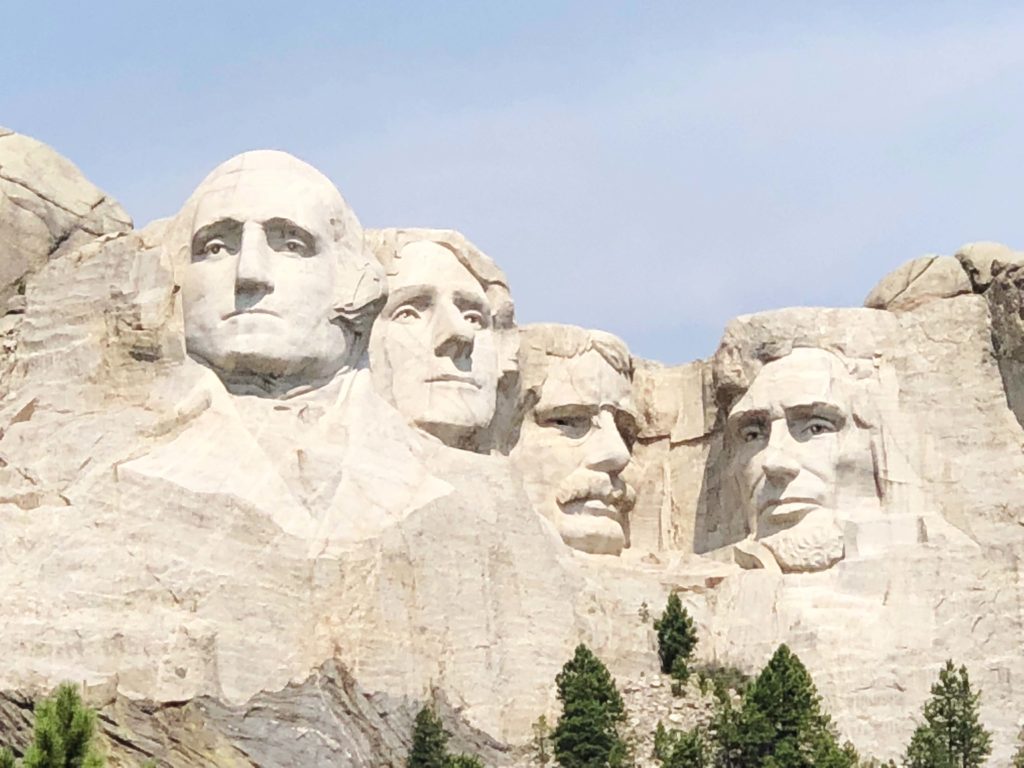
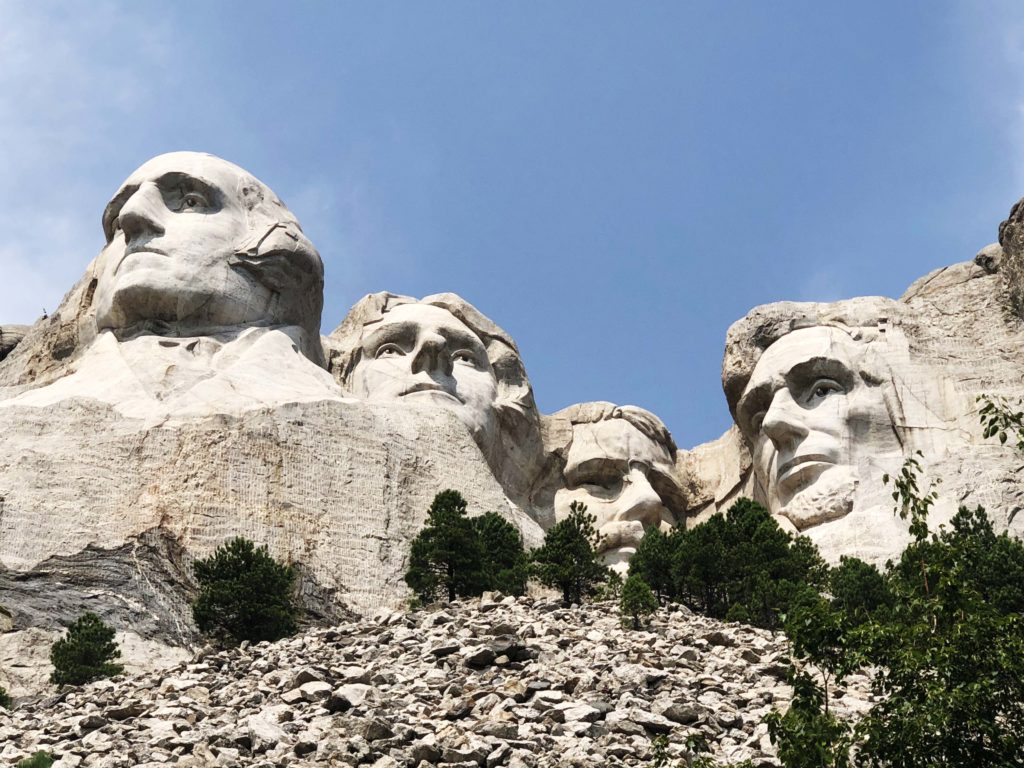
The sculptor, Gutzon Borglum, was a well-known American sculptor of Danish ancestry. The sculpting took place from 1927 to 1941 and employed about 400 workers. Each head of the sculpture is about 18m high. The project secured federal funding over its life, but that funding dried up in late 1941 when the US was drawn into the Second World War. As a result, Lincoln’s left cheek remains unfinished and all four were supposed to be sculpted down to their waists. Interestingly, Jefferson was supposed to be carved on the other side of Washington, but the rock was found to be unsuitable and moved to the other side.
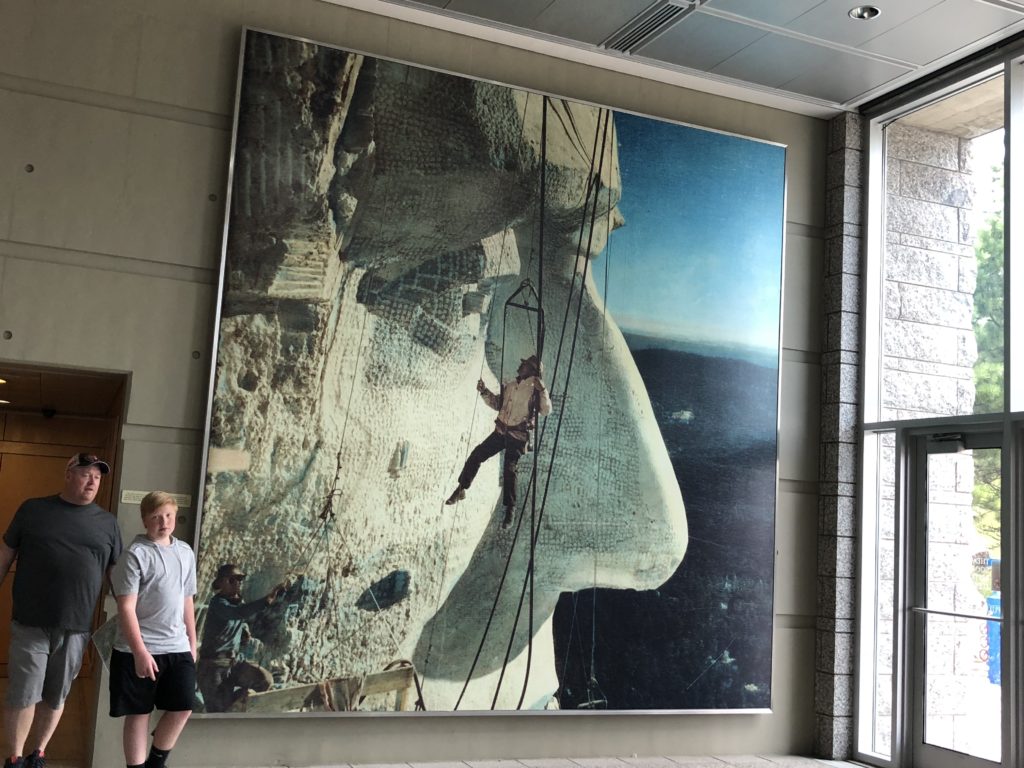
Ella and I doing our best George Washington poses:
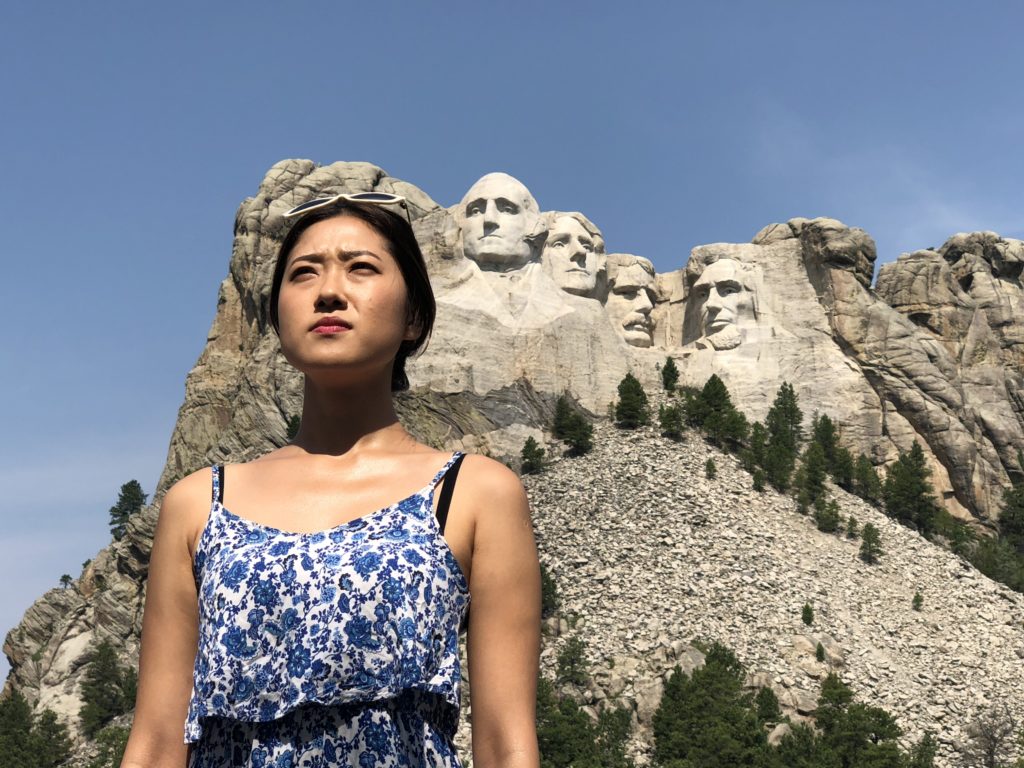
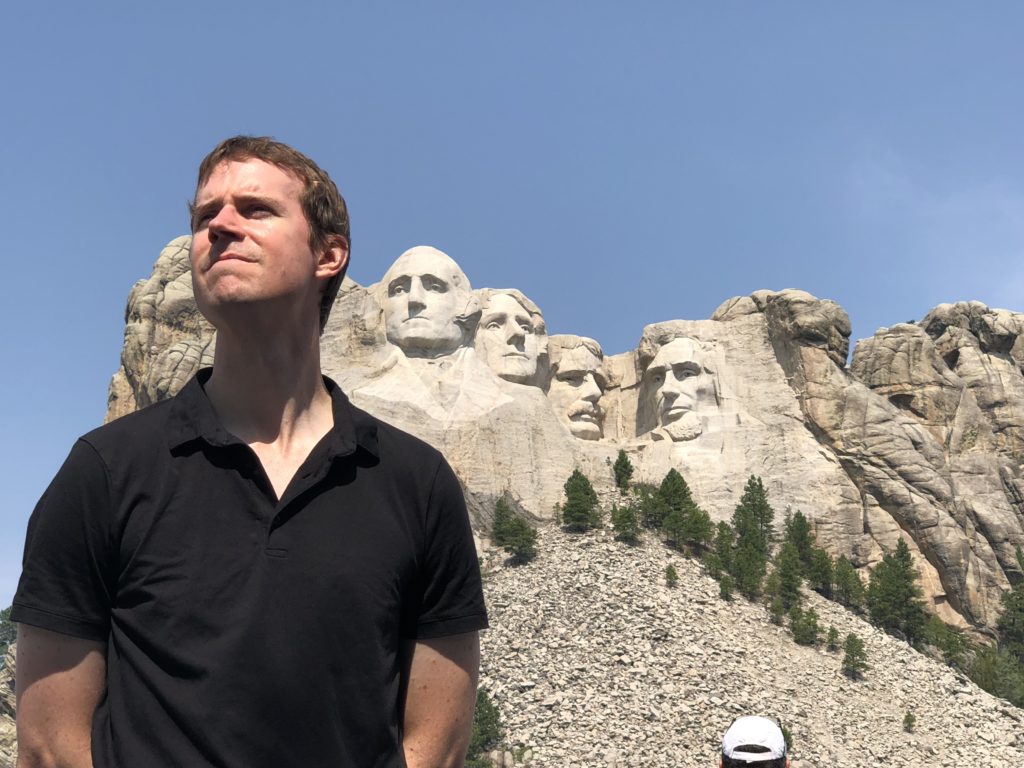
Mount Rushmore is a really impressive sight. It got me wondering about America’s interesting obsession with its founding fathers. This group seems to play a central role in the mythology of America’s ‘enlightened founding’, that borders on religious belief, and seems very close to the average American’s heart. While they were just a group of people, they seem to have been cast in the role of grand visionaries. To this day, the Supreme Court intensely debates what the founding fathers intended when they chose specific words in drawing up the constitution. I don’t mean this in a negative way, every group of people seems to require a uniting symbol so as not to tear each other apart. The same appears true of the land of the free.
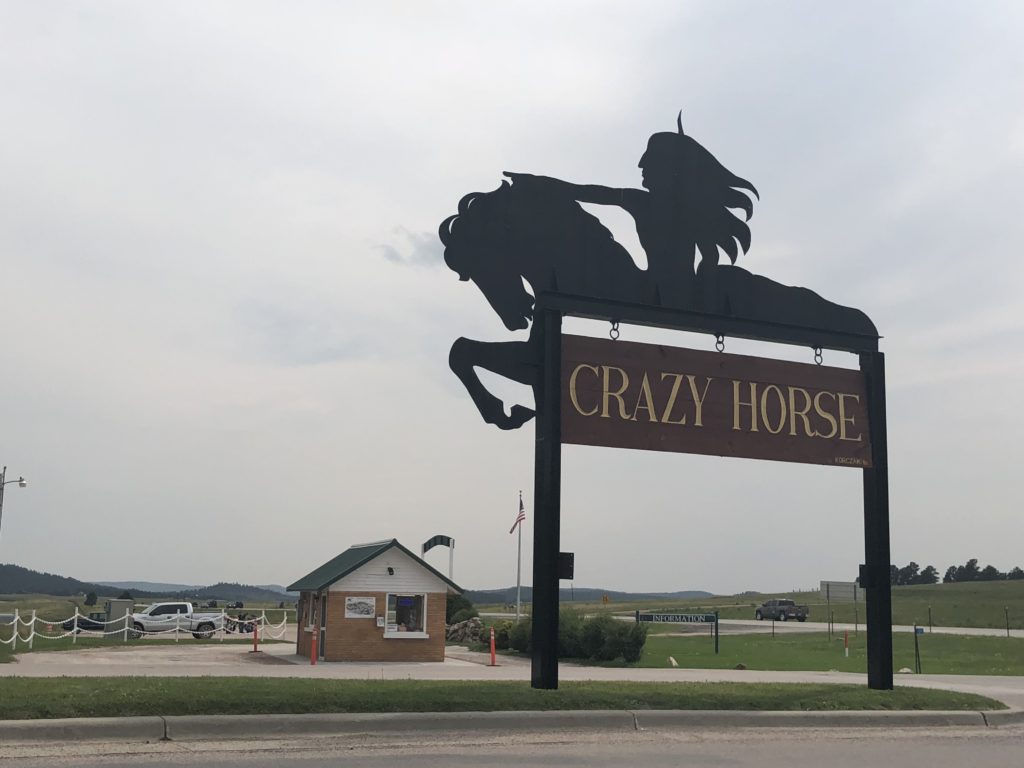
Prompted by the sight of Rushmore in 1939, Sioux leader Henry Standing Bear urged another sculptor, Korczak Ziolkowski, to help him carve a monument for the Native Americans, apparently to show the white man “that the red man has great heroes too”. They settled on a depiction of Crazy Horse, a revered warrior of the Lakota, on horseback gesturing that (in response to the question: “Where are your lands now?”) “My lands are where my dead lie buried”. The carving began in 1948 on Thunderhead Mountain, a short drive from Rushmore, and continues to this day. The sculptor has passed away but his family and others continue the work. The white model two pictures below is the intended end product. The project has refused federal funding and instead relies on donations and visitors entrance fees. Bold ambition, but still a long long way from finishing.
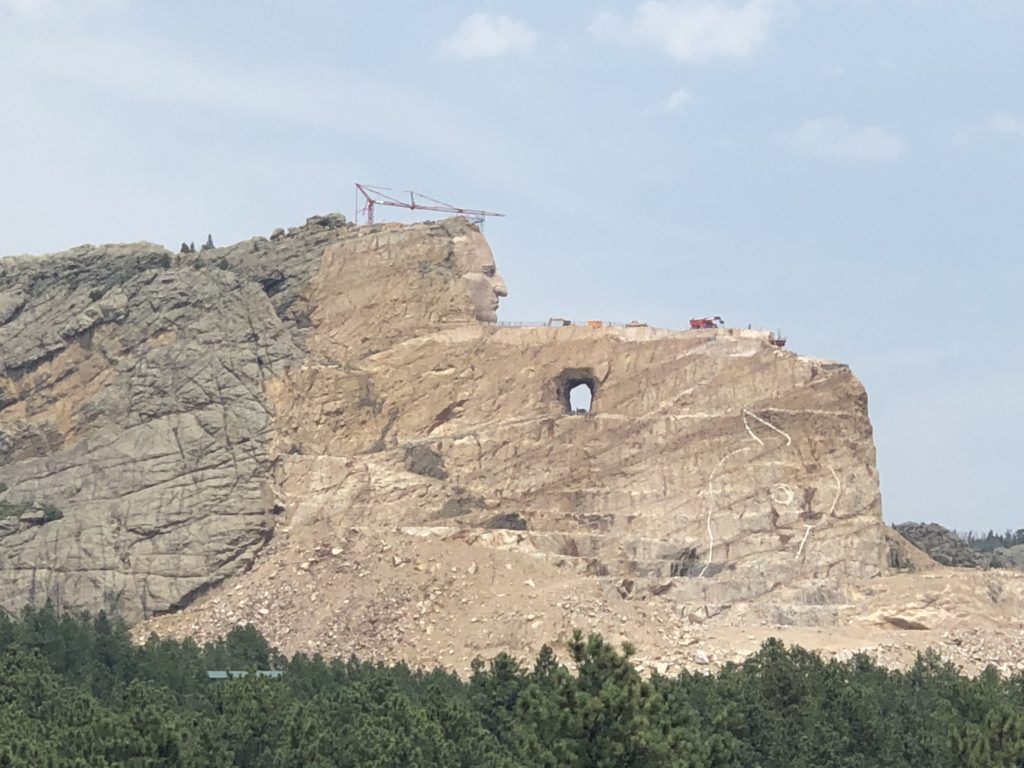

Oh, and Ella found her sunglasses again!
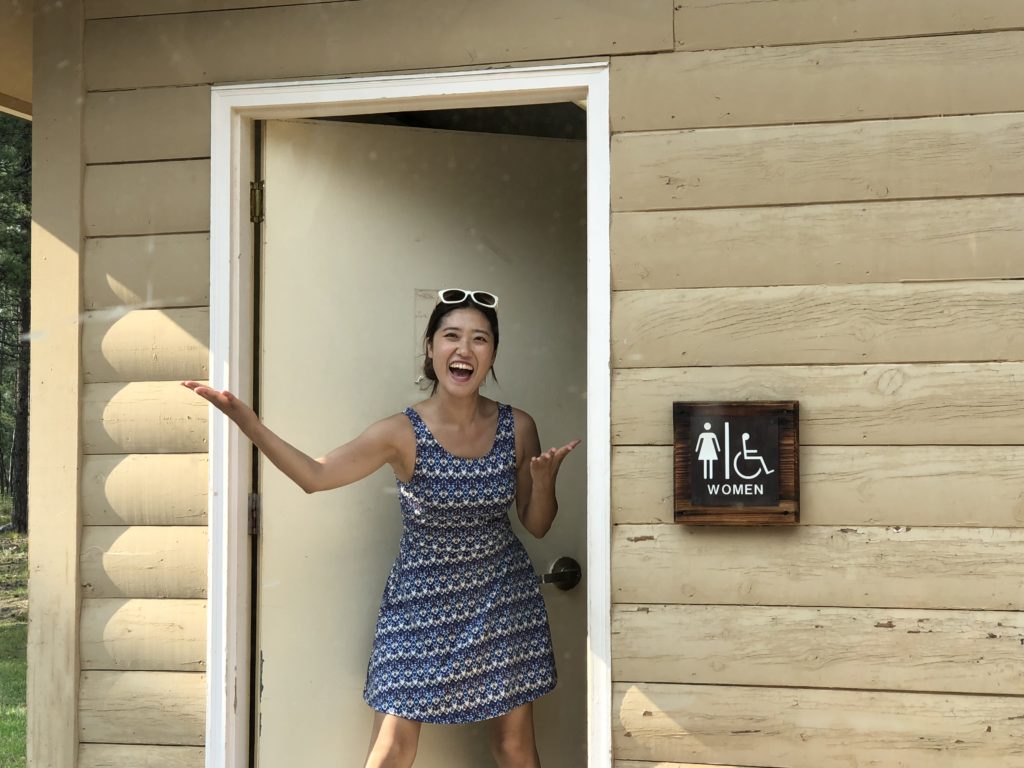
On to the cowboy country of Wyoming…

